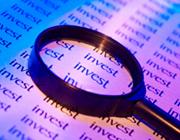 Nibble. I’m on a diet where you are required to eat six small meals a day instead of what we’re used to consuming in this country: three squares daily. Nibble, nibble.
Nibble. I’m on a diet where you are required to eat six small meals a day instead of what we’re used to consuming in this country: three squares daily. Nibble, nibble.
It’s something that we as Americans have to retrain ourselves to do in our eating habits … and something we should learn to do in our investing situations as well.
A long time ago the phrase for this was called “dollar cost averaging.” We’ve discussed it in these columns of TheSavvyGal.com during the last few years. But at no time in the last few decades has it become more important to understand and utilize than now then when the economy seems to be collapsing around us and every day brings news of impending doom and gloom, followed by euphoria because someone somewhere happened to “get it right” for a change.
This morning as I write this, for example, Hewlett Packard, the computer maker, announced better than expected earnings for their quarter. Now, this doesn’t sound like much, but in this economic climate, it’s a miracle, it’s worthy of a ticker tape parade, trumpets sounding, loud applause. As a result, the share price of HPQ is up around 9 percent as I write this. If you were a shareholder of HPQ before the market opened this morning, you’d be out dancing in the streets to celebrate. A stock that is actually going up!! Who can remember such a thing?
But wait … there may be more! Stand by. Watch and listen. The market has another five hours remaining in the day today before it shuts down for a brief sleep overnight. It’s entirely possible that by the end of the trading day today, HPQ could be DOWN!! So before you put on your dancing shoes, come back to reality. Nibble, nibble. Baby bites. Not big gulps but little mincing tastes.
Let’s continue with HPQ as an illustration. Let’s say that a few months ago you wanted to buy a computer stock, and this was the one you felt would be the winner. You had enough money in cash on hand to be able to buy 1,000 shares at the current stock price. So you make your purchase; you’ve now used up all the money you had available to buy HPQ. It’s not the end of the world if you decide to do it this way, but let me suggest an alternative that in this kind of volatile market might work even better for you.
Let’s say you want to eventually spend the entire $1,000 you have on HPQ stock. (The amounts can change but the principal is the same, obviously.) But you want to do it in a nibbling manner. So on a day when the stock is down a bit (not hard to find in this market, which is the bright side of your quest), you buy $250 worth. Now, if you’re with a deep discount online brokerage firm, the commission you’ll pay will not be substantial. You buy your shares at the going rate. Two weeks later, the stock takes another hit, so you buy another $250 worth. You keep doing this until you have spent the entire $1,000 on HPQ stock, but you have managed to get it at an average price that is considerably lower than it would have been had you bought it all at once. You’re averaging the cost of the shares lower because you’re buying when the stock takes a hit downward.
Now the only way to go is UP! Right? Well, not always, but dollar cost averaging or buying in nibbles instead of all at once enables you to stack the odds in your favor more when the market is volatile and sliding downward than when the stock market is on a bull run and always moving upward. It’s one of the few advantages to investing when the market is in bear mode, and one which you should participate in when and if you can.
Nibble, nibble. This might be one way to prevent stock indigestion: that phenomenon of buying high and then having to sell lower. Here’s some homework for you: Pick a stock you are interested in and pretend to buy a certain dollar amount worth when you see it is down. Then do the same thing two or three other times and see what the average cost of each share would be compared to buying all your shares on that first purchase date. You’ll be surprised at the results and it will make you a confirmed stock nibbler.
Rita is a successful private investor and leads four investment clubs where she has taught hundreds of women about stocks and finances. She is the chairperson of the board of an international non-profit organization and devotes much of her time to a variety of charity work.
